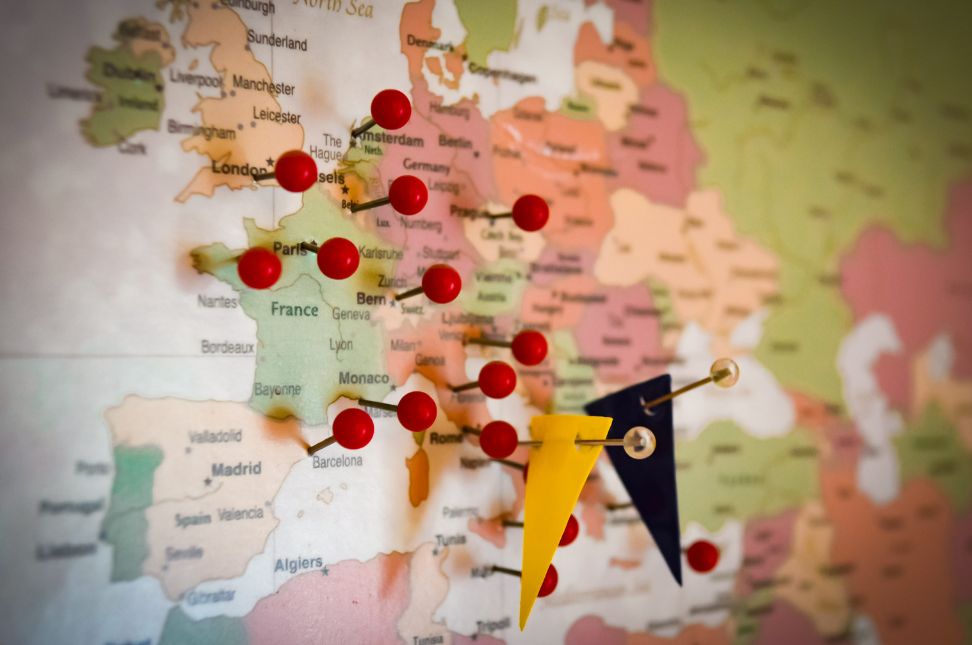Planning a European adventure can be an exciting yet daunting task. With so many countries, cultures, and landmarks to explore, it’s essential to have a well-thought-out plan. If you’re wondering how to plan a multi-country European trip, here’s a comprehensive guide to help you navigate the process.
Determine Your Budget
The first step in planning any trip is determining your budget. This will influence your choice of destinations, accommodation, transportation, and activities. Europe offers a range of options from budget-friendly hostels to luxury hotels, and from low-cost airlines to high-speed trains. Decide how much you are willing to spend and allocate your budget accordingly.
Choose Your Destinations
When figuring out how to plan a multi-country European trip, selecting the countries you want to visit is crucial. Consider your interests: history, architecture, nature, food, or culture. Popular routes include:
- Western Europe: France, Germany, Netherlands, Belgium.
- Southern Europe: Italy, Spain, Greece, Portugal.
- Eastern Europe: Poland, Czech Republic, Hungary, Croatia.
- Northern Europe: Denmark, Sweden, Norway, Finland.
Research the highlights of each country and prioritize the destinations that excite you the most.
Plan Your Itinerary
Creating a well-balanced itinerary is essential. Decide how many days you will spend in each country. Consider the travel time between destinations to avoid spending too much time on the road. For a two-week trip, you might plan to visit three to four countries, spending about three to four days in each. A sample itinerary could be:
- France: Paris (3 days)
- Germany: Berlin (3 days)
- Czech Republic: Prague (3 days)
- Austria: Vienna (3 days)
Research Entry Requirements
Each European country may have different entry requirements. Check if you need visas or any special permits. For example, US, UK, and Canadian citizens can travel to Schengen Area countries for up to 90 days without a visa. Ensure your passport is valid for at least six months beyond your planned departure date.
Book Your Flights and Accommodation
Once you have your itinerary, book your flights. Consider flying into one city and out of another (multi-city flights) to save time and avoid backtracking. For accommodation, platforms like Airbnb, Booking.com, and Hostelworld offer a range of options. Booking in advance can save money and secure your preferred lodging.
Plan Your Transportation
Europe is known for its efficient transportation systems. Depending on your itinerary, choose the most convenient mode of travel:
- Trains: Ideal for short to medium distances. Consider a Eurail pass if you plan extensive rail travel.
- Flights: Low-cost airlines like Ryanair and EasyJet offer budget-friendly options for longer distances.
- Buses: Companies like FlixBus provide affordable travel between cities.
- Car Rentals: Good for exploring rural areas or regions with less public transport.
Pack Smart
Packing smart is essential for a smooth trip. Consider the weather and activities planned for each destination. Bring versatile clothing that can be layered. Don’t forget essentials like travel adapters, comfortable walking shoes, and a compact umbrella. Use packing cubes to organize your suitcase and save space.
Stay Connected
Staying connected while traveling in Europe is easier than ever. Consider purchasing a local SIM card or an international roaming plan to use your phone for maps, bookings, and communication. Many European cities offer free Wi-Fi in public areas, cafes, and hotels.
Learn Basic Phrases
While English is widely spoken in Europe, learning basic phrases in the local language can enhance your travel experience. Simple greetings and polite phrases in French, German, Spanish, or Italian can go a long way in making connections with locals.
Be Mindful of Cultural Differences
Each European country has its own customs and etiquette. Research the cultural norms of each destination to avoid any unintentional faux pas. For instance, tipping practices vary, and in some countries, it is customary to greet with a handshake, while in others, a kiss on the cheek is common.
Stay Safe
Safety is paramount when traveling. Keep copies of important documents, such as your passport and travel insurance. Be aware of your surroundings and avoid risky areas, especially at night. Use hotel safes to store valuables and carry only what you need for the day.
Make the Most of Your Experience
To truly enjoy your European adventure, immerse yourself in the local culture. Try regional cuisines, visit lesser-known attractions, and engage with locals. Take advantage of free walking tours to learn about the history and culture of each city. Don’t rush through your trip; take time to relax and soak in the atmosphere.
Conclusion
Knowing how to plan a multi-country European trip involves careful preparation and a bit of research. By setting a budget, choosing the right destinations, and planning your itinerary meticulously, you can ensure a memorable and stress-free journey. Remember to stay flexible and open to new experiences. With the right approach, your European adventure will be an unforgettable experience filled with rich culture, stunning landscapes, and lasting memories.




